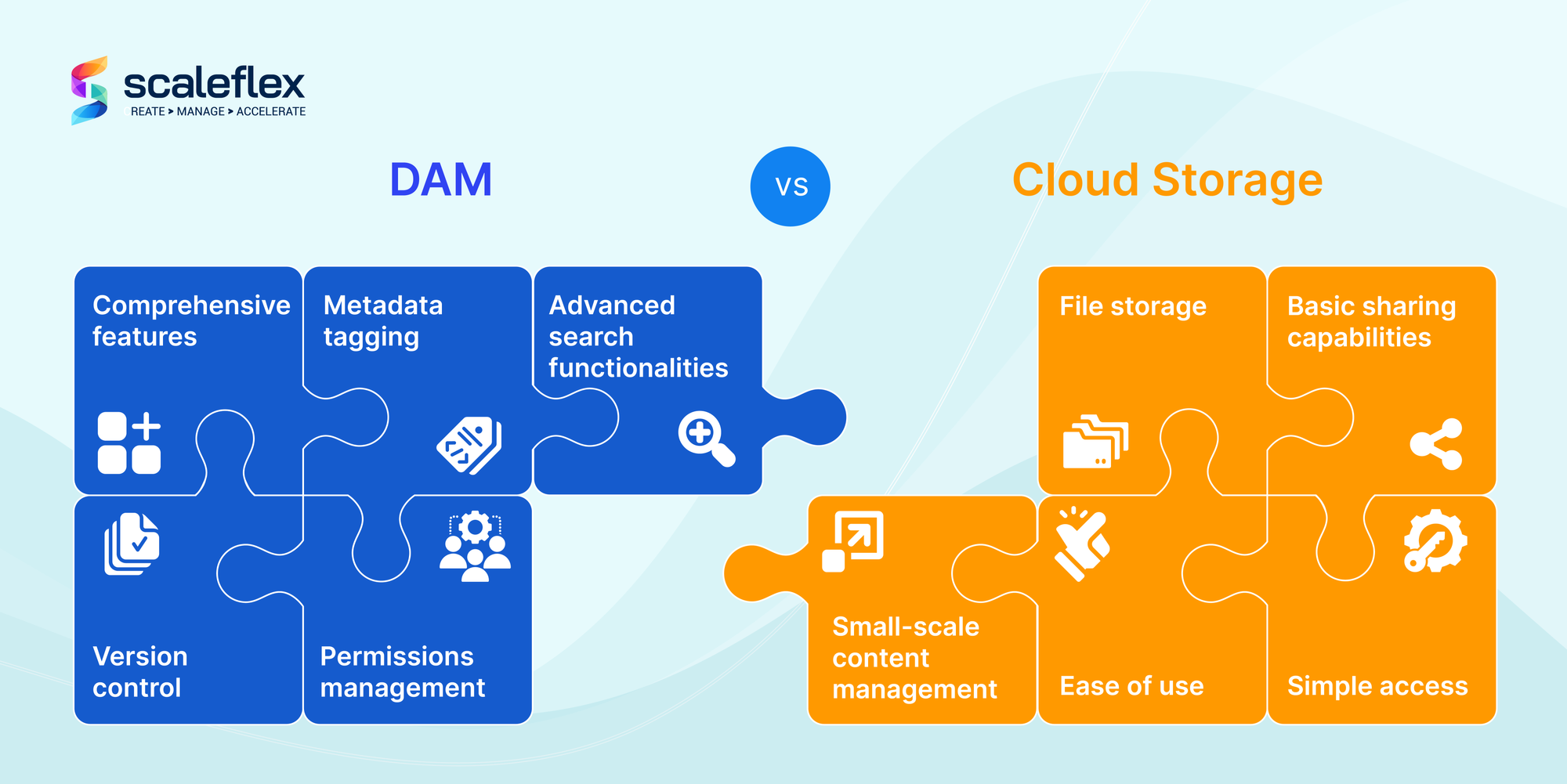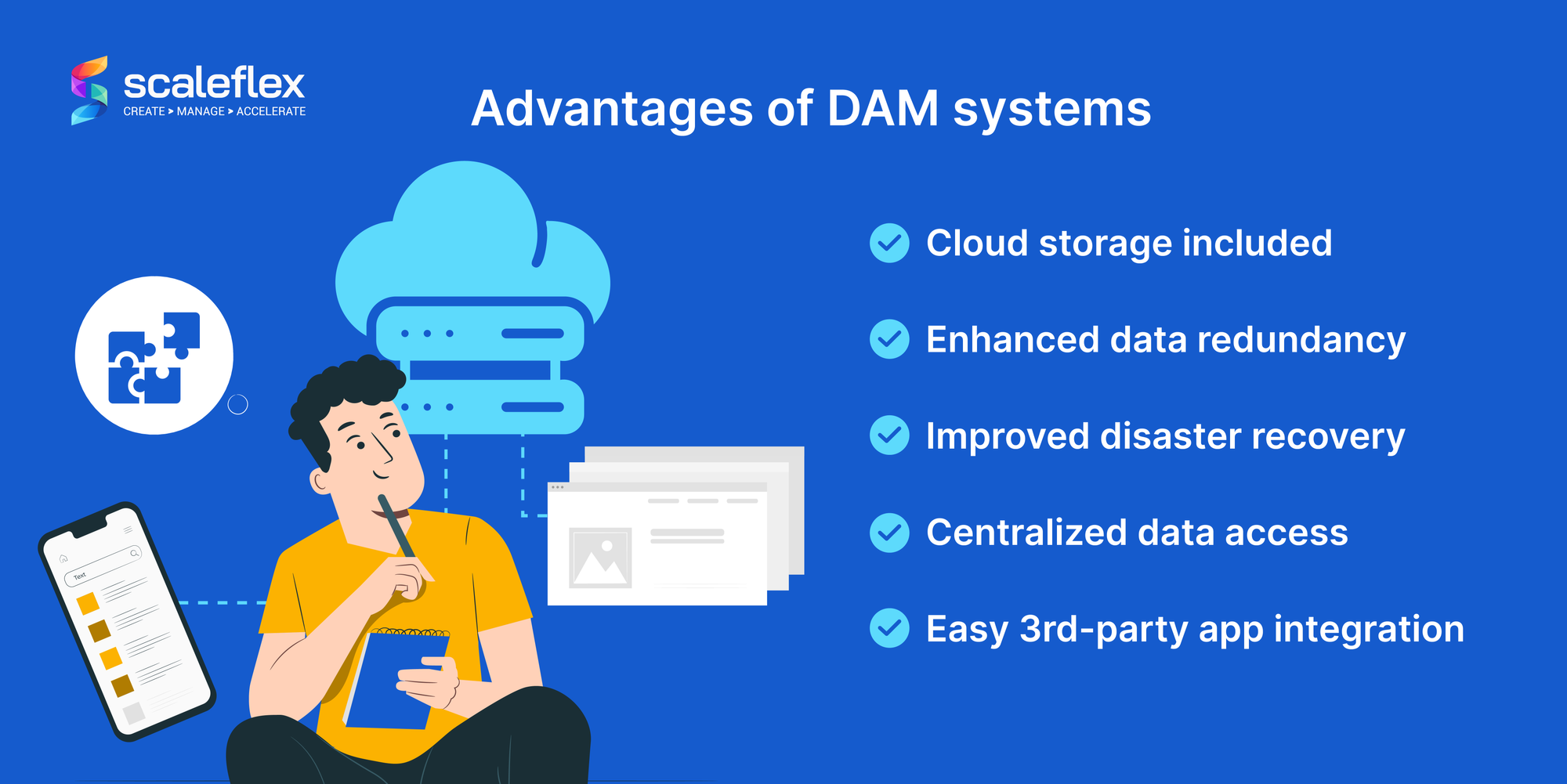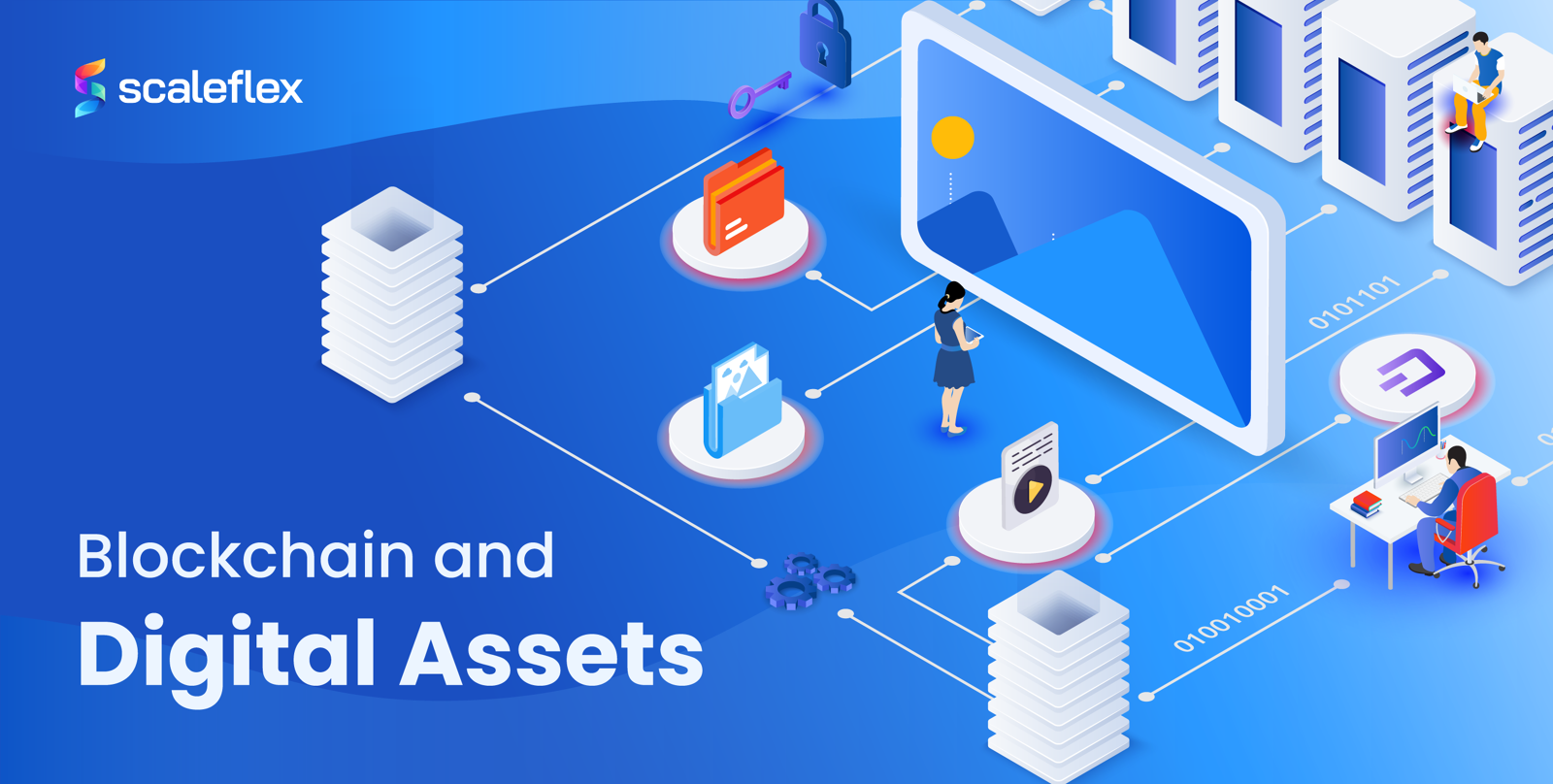Digital Asset Management vs. Cloud Storage: Which Is Best For Your Data Processing?
It is a well known fact: in our current digital world, impactful content and its subsequent storage play a pivotal role in the success and sustainability of companies across a range of industries. In a nutshell, media storage has effectively become the backbone of modern business operations.
When effectively managed and organized, content and media storage ensure the seamless access, organization and preservation of digital assets that may range from important text documents to diverse multimedia files. The preservation, ease of access and comprehensive organization of these elements is crucial for several reasons:
- Streamlined storage facilitates efficient collaboration among team members and with external collaborators.
- Ease of access and retrieval fosters agility and productivity within the organization.
- Data has incalculable value, and a robust storage system guards against its loss or corruption, mitigating potential risks.
- Well-structured storage facilitates compliance with regulatory requirements.
As businesses continue to expand their digital presence, the volume of content and media they generate, share and publish grows exponentially. There’s just no way of getting around it: content is the essential pillar for advertising and marketing in our modern world. Efficient storage solutions can provide scalability, accommodate the increasing influx of data all while safeguarding performance and accessibility.
Investing in adequate content and media storage isn’t any longer just a choice, it’s a necessity for companies willing to thrive in today’s digital era. Let’s explore some of our most common options: digital asset management vs cloud storage.
Understanding Cloud Storage and DAM: Basic Distinctions
When it comes to storing multimedia and digital assets, there are two prominent solutions that crop up time and time again for companies: digital asset management vs cloud storage. While they can both effectively serve the purpose of housing content and multimedia files, they do exhibit distinct characteristics and functionalities that can be tailored to different needs. It’s important to be aware of their basic utilities and distinctions in order to make the wisest choice for one’s business needs.
Cloud storage tools (Google Drive, Dropbox, OneDrive) offer pretty straightforward file storage and sharing capabilities in a virtual environment. They are convenient and accessible, they allow users to store files remotely and to access them from anywhere, on any device: all you need is an internet connection (in some instances, some documents may be saved off-line, and they can then be perused even without internet). The simplicity of cloud storage makes it ideal for personal use, small-scale collaborations and small business venues, where a basic file management system will suffice.
Conversely, digital asset management solutions offer comprehensive sets of features specifically designed to manage and optimize digital assets within a business context. Contrary to what we may know as more generic cloud storage, DAM prioritizes organization, metadata tagging and advanced search functionalities. The goal is to facilitate company growth and scalability, guaranteeing that assets can be efficiently located and leveraged across departments and projects, even in the face of increased media and files. Additionally, DAM solutions include version control, permissions management and features that enable workflow automations, to ease collaboration and ensure consistency and compliance in asset use.

Another crucial difference between cloud storage and DAM lies in their customization and integration capabilities. DAM platforms can be tailored to suit specific industry requirements, seamlessly integrating with existing software ecosystems. It’s a level of customization and integration that fosters synergy across tools and enhances overall efficiency.
To sum up, cloud storage tools excel in straightforward-ness, simplicity and accessibility, while DAM offers comprehensive asset management functionalities, customization options and enhanced security features. The choice between cloud storage vs dam is to be made according to factors such as organizational size, industry requirements, and the level of control and governance desired over the assets.
Choosing the right solution for your needs
As we’ve mentioned when going over the main distinctions above, when choosing between digital asset management vs cloud storage, the key step is to assess your organization’s specific requirements and goals.
First of all, consider the scale and the complexity of your digital asset management needs. If you believe you will require advanced functionalities (such as metadata tagging, workflow automation, version control, etc) a DAM solution may be the best choice to streamline management and increase productivity.
Then, gauge the level of collaboration and customization your content management demands. If you cooperate in a highly collaborative environment, with stringent governance and compliance requirements, a DAM’s tailored features may offer the greatest value. If, on the other hand, you collaborate frequently but on a more individual level and can profit from greater fluidity, simplicity and cost-effectiveness, then cloud storage is the better solution for you, especially if you count a smaller team or even just personal use.
Ultimately, whether cloud storage vs dam is the best solution for you depends on the perfect balance of functionality, scalability, security and budget considerations to fit your company’s unique needs and priorities.
The advantages of DAM: why upgrade from Cloud Storage to DAM
DAM platforms offer a multitude of advantages, concretely in their adaptability and integration capacities. It’s a significant benefit that they can seamlessly integrate with multiple external cloud storage services. This permits them to leverage the scalability and reliability of established providers such as AWS, Google Cloud or Microsoft Azure. Through integrations with external cloud storage providers, DAM platforms offer the flexibility organizations need to centralize and handle their digital assets in the most effective way, all while harnessing the storage infrastructure of their preferred cloud provider.
Additionally, DAMs can extend their utility through APIs and headless infrastructure, which enables them to integrate with third-party ecosystems, like for instance, content management systems, customer relationship management platforms (CRM) or e-commerce solutions like PIMs. This acute level of connectivity empowers companies to organize workflows, automate processes and deliver content efficiently and easily across a multitude of channels.
Finally, the headless infrastructure provided by DAM platforms decouples the backend storage and the management functionalities from the initial presentation layer. This allows greater flexibility in content delivery and customization. It’s an architecture that facilitates adaptability for organizations so that they can easily adhere to evolving digital trends and customer preferences, all while keeping a centralized repository for their digital assets. Ultimately, the many advantages of DAM platforms reside in their capacity to accelerate asset management, facilitate collaboration, and optimize the delivery of content across diverse ecosystems in our current digital landscape.

Key Takeaways
To conclude, choosing between DAM systems vs Cloud Storage services depends on the unique needs and priorities of each company. With cloud storage offering simplicity and accessibility, and DAM providing comprehensive asset management functionalities, needs must be assessed to make an informed decision in order to optimize content workflows. Scaleflex's DAM solution offers an intuitive and light-fast solution for companies wanting to make the most out of their visual assets. Whether you end up choosing DAM or cloud storage, or a mixture of both, the most important work will be done when assessing your needs and recognizing the value of putting in place some form of system management for your content.
Ultimately, whether you opt for a DAM vs cloud storage tool, organizations must always prioritize functionality, scalability, security and budget considerations, in order to successfully manage and leverage their digital content in service of their business.





